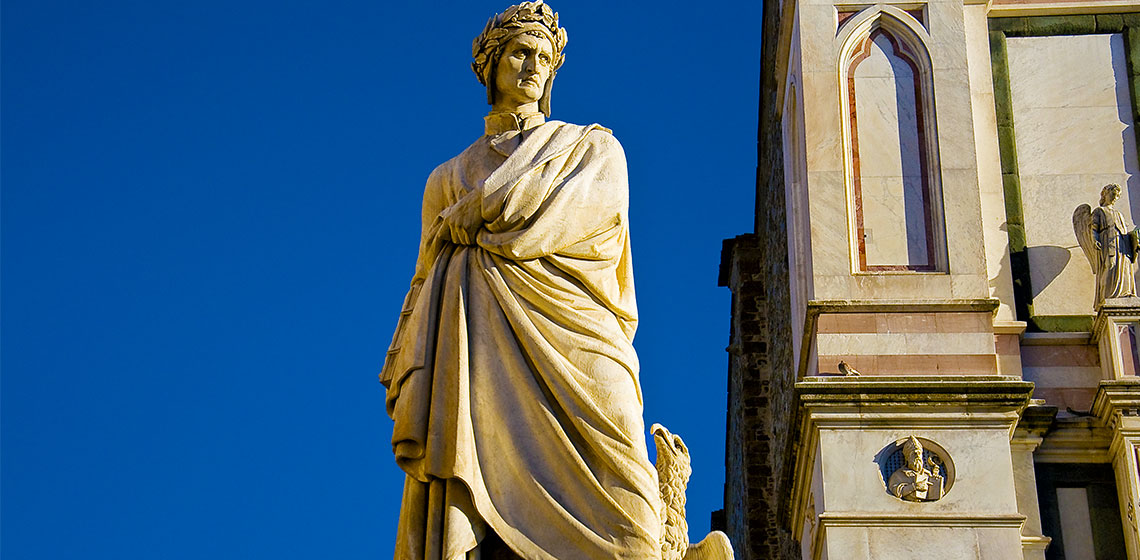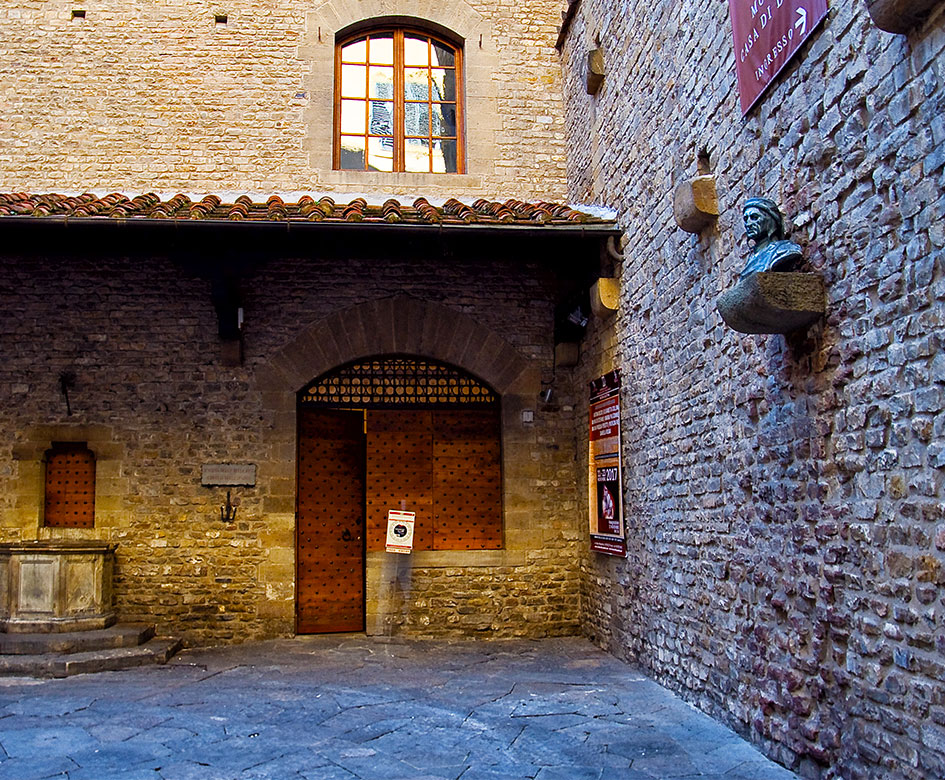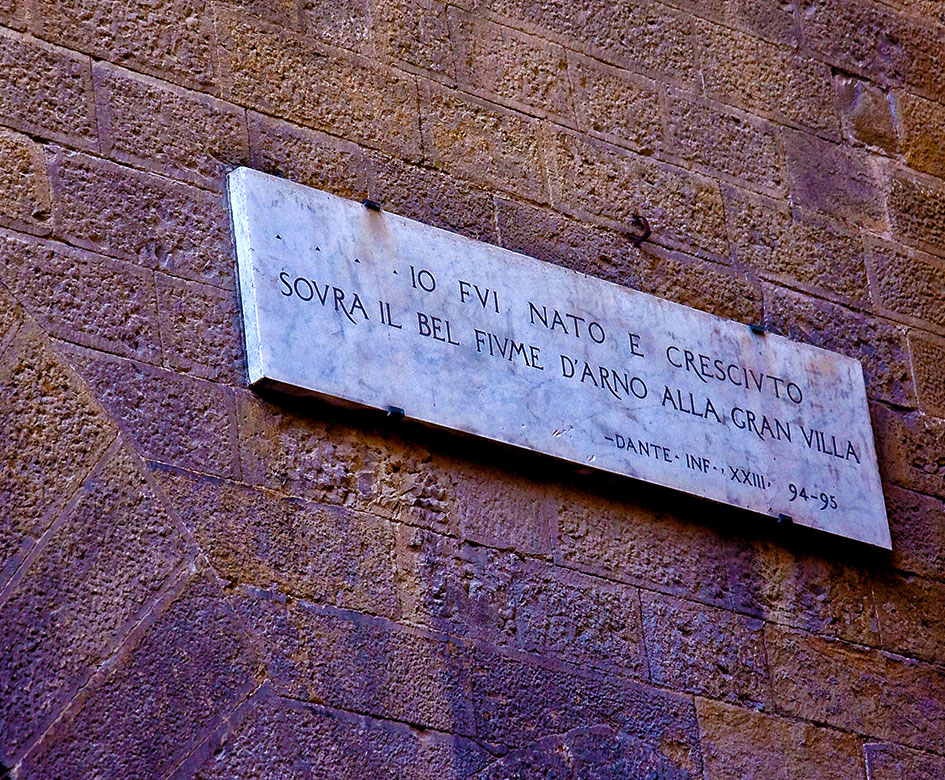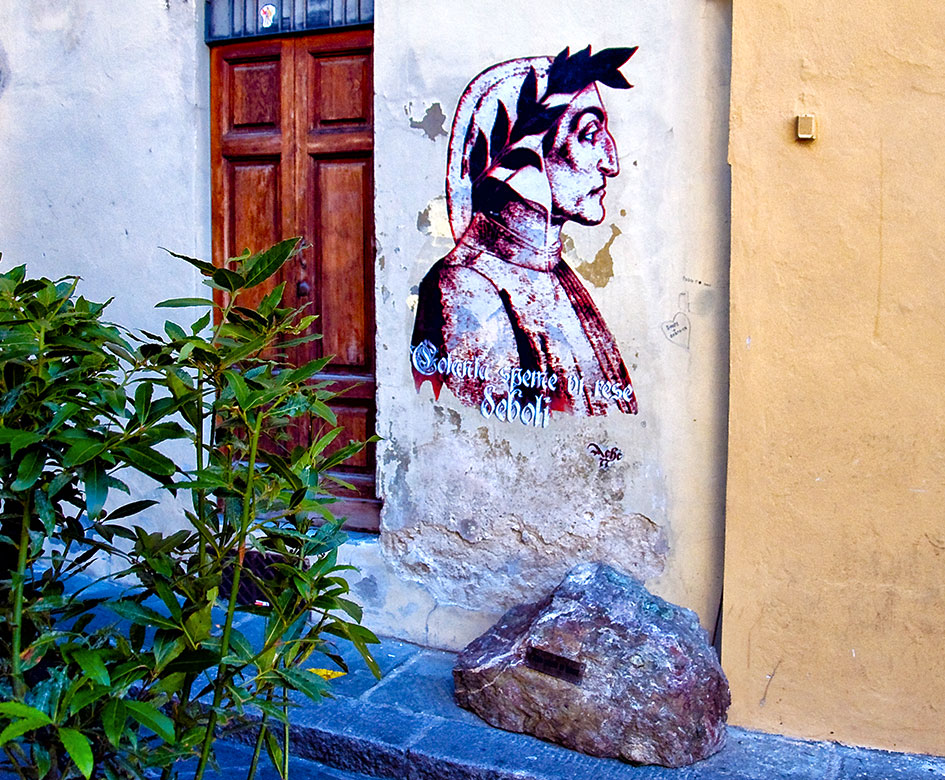
Following Dante Alighieri’s footsteps
A tour where you’ll discover traces of the Supreme Poet in his beloved Florence.

Portraits of Dante
There are three main areas where you’ll find portraits of the great poet (though Florence vaunts many more). The first is among the beautiful frescoes in the Spanish Chapel (located in the
Santa Maria Novella Museum), in which the poet is depicted among other figures of his time.
The second portrait is found in the Bargello Museum in the Cappella del Podestà, where you’ll find a fragment of an extraordinary fresco cycle portraying Scenes from the Life of Mary Magdalene and the Last Judgment (frescoed by Giotto’s school).
The third portrait is surely the most famous and iconic of the three, located inside the Florence Cathedral. Here, you’ll find a fresco by Domenico di Michelino depicting Dante with his Divine Comedy and surrounded by scenes from the text; Dante is featured mid-explanation, immersed in the settings of his literary masterpiece.
Divine Comedy tablets
Meandering through the city’s streets, you’ll come across a number of tablets citing verses from the Divine Comedy. The city boasts thirty-four in total, most of which commemorate noble Florentine families. The locations of the tablets are directly linked to the city’s historic figures or “memories.” This setting forms a poetic path for visitors, one that emerges from the city’s stone palaces and walls.

An oddity in Florence… Dante’s “Stone”
From piazza del Duomo, following the southern side of the Cathedral, you’ll come across a small open area called piazza delle Pallottole. Here, you’ll find a large boulder: this stone is said to be where Dante once sat to observe the Cathedral’s construction (taking place during his lifetime).This is surely the best way to imagine the Supreme Poet: his proud and reflective gaze quietly pondering the building, picturing the cathedral’s completed structure.







 All the services are provided by local merchants
All the services are provided by local merchants By using this site you support Florence
By using this site you support Florence We offer products with high-quality standards
We offer products with high-quality standards You stay sustainable
You stay sustainable It's a 100% trustworthy website
It's a 100% trustworthy website